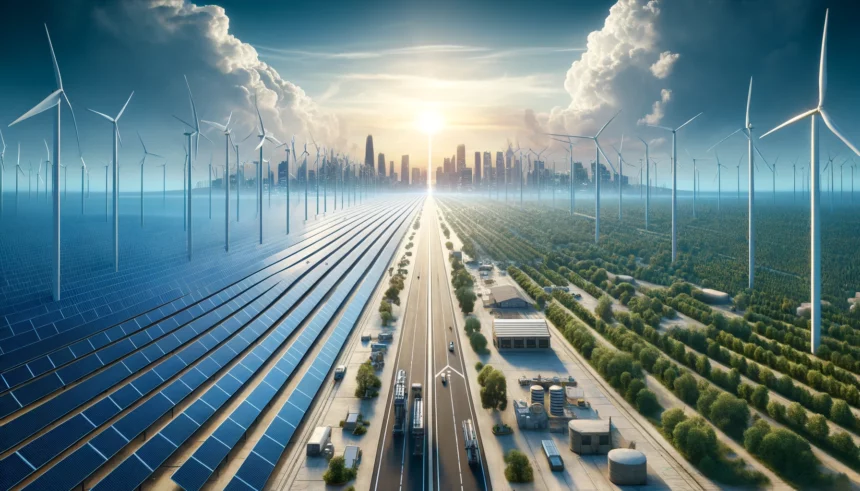In an eye-opening analysis by think tank Ember, wind and solar power have emerged as the fastest-growing sources of electricity in history. These renewable energy sources are expanding rapidly, outpacing the increase in global electricity demand and signaling a significant shift in how we produce energy. Let’s dive into the details and understand why this is such a big deal.
Key Highlights
- Record Growth: Wind and solar energy are growing faster than any other electricity sources ever have.
- Peak Fossil Fuel Use: This growth is set to cause a peak in fossil fuel electricity generation and emissions starting this year.
- Global Electricity Mix: Renewables met 30% of global electricity demand in 2023.
- Avoided Emissions: Without wind and solar, fossil fuel power would have been 22% higher in 2023, adding around 4 billion tonnes of CO2 emissions annually.
The Rise of Renewables
Wind and solar power have not just stemmed the tide of fossil fuel growth—they are reversing it. Here are some striking points from Ember’s latest annual review:
- New Era of Energy: A significant drop in fossil fuel generation is imminent as renewables continue to grow.
- Historical Growth: No other sources of electricity have grown as quickly from 100 terawatt hours (TWh) per year to 1,000 TWh. Solar took just eight years, and wind twelve, compared to gas (28 years), coal (32 years), and hydropower (39 years).
Clean Energy Capacity Expansion
In 2023, solar energy additions more than doubled those from coal. Here’s how different sources fared:
- Solar Power: Reached 5.5% of the global energy mix, up from 4.6% in 2022.
- Wind Power: Stayed steady at 7.8%, generating 2,304 TWh.
- Hydropower: Despite adding 7 gigawatts (GW) of new capacity, its share fell to 14.3% of the electricity mix.
Challenges and Setbacks
Despite the impressive growth, there were some hurdles:
- Lower Solar Output: Solar generation growth lagged due to lower sunlight levels and underreporting in some countries.
- Wind Power Dip: Wind generation fell for the first time since 2001 due to low wind conditions and higher costs delaying projects.
- Hydropower Shortfall: A significant drop in hydropower generation caused a slight rise in power sector emissions by 1%.
Future Projections
Looking ahead, the future of renewable energy looks even brighter:
- Accelerating Demand: Global electricity demand hit a record high in 2023, driven by electric vehicles (EVs), heat pumps, and data centers.
- Electrification Boom: Over half of the demand growth was due to electrification in various sectors.
- Massive Renewable Growth: Wind, solar, and other clean energy sources are expected to add 1,300 TWh in 2024, more than doubling the increase in 2023.
The Path to 2030
At the COP28 UN climate conference in Dubai, countries agreed to triple global renewable energy capacity by 2030. This ambitious target aims to:
- Cut Emissions: Reduce power sector emissions by nearly half.
- Shift Power Mix: Achieve 60% of global electricity from renewables.
- Avoid Emissions: Wind and solar have already prevented over 4 GtCO2 emissions between 2015 and 2023.
Conclusion
The rise of wind and solar power is not just a technological feat; it’s a necessary step towards a sustainable future. With continued investment and innovation, these renewable sources can help meet global energy demands while significantly reducing greenhouse gas emissions.
Call to Action
To stay on track with climate goals, countries need to:
- Invest in Renewables: Increase funding for wind and solar projects.
- Improve Reporting: Ensure accurate reporting of renewable generation.
- Support Innovation: Encourage technological advancements to make renewables more efficient and cost-effective.
Wind and solar power are leading the charge in a new era of clean, sustainable energy. As we continue to embrace these technologies, we can look forward to a brighter, greener future.
















